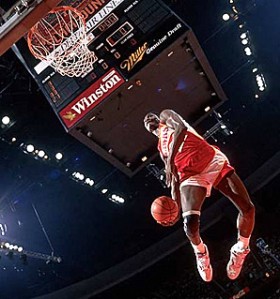The late, great Mel Siff often referred to the Seven S-factors of fitness. The S-factors include:
1. strength
2. stamina (general cardiovascular endurance and local muscular endurance)
3. suppleness (flexibility)
4. speed
5. skill (kinasthesis, motor coordination and control)
6. structure (size, shape), and
7. spirit (psychological fitness)
Dr. Siff sure was ahead of his time. I tend to look at fitness like this:
1. soft tissue work (foam rolling, TPT, SMR)
2. flexibility (muscle length, static stretching, PNF)
3. mobility (dynamic stretching and mobility drills)
4. stability (isometric strength, core stability (anterior, posterior, lateral, rotational))
5. movement efficiency (activation work, corrective exercise (prehab), motor control, balance (proprioception), posture, strength balances, skill, technique, form, minimization of energy leaks, clean movement, etc.)
6. hypertrophy (sarcomeric and sarcoplasmic, physiological cross sectional area (PCSA))
7. strength (limit strength (absolute strength), strength-speed, speed strength, starting strength (impulse), relative strength, upper body, core, lower body)
8. power (explosive strength, rate of force development (RFD), neural drive, HTMU stimulation, rate coding, synchronization, intermuscular coordination, intramuscular coordination)
9. agility (load vector specific training, eccentric strength)
10. reactive ability (elasticity, plyometrics, ballistics, reflex potentiation and inhibition)
11. linear speed (sprint training, sled work, towing)
12. quickness (reaction time, hand-eye coordination, contraction/relaxation sequences)
13. conditioning (local muscular endurance, energy system development (aerobic, glycolytic, phosphagen), power endurance, work capacity, GPP, SPP)
14. recovery (nutrition, sleep, stress (distress, eustress), visualization, thermal therapy, cryotherapy, massage, SMR, vibration, EMS, supplementation, nutrient timing)
15. mental toughness (pain tolerance, drive, determination, motivation, desire, adaptability (to chaos), discipline, coachability, instincts, sport knowledge, kinasthetic intelligence)
16. genetic gifts (anthropometry (leverages), somatotype, height, weight, body composition, fiber type proportions, tendon insertion points, anabolic and catabolic hormone levels, resistance to illness and injury, damping efficiency, stiffness, viscocity)
I know it’s complex but once you understand how these various components interact, you can attempt to build the optimal athlete!








Great blog.!
What is an energy leak.?I play tennis and i know all about the kinetic chain and power coming from the floor .I would guess somwhere between feet and hand there is not a optimum transfer of energy.?If so, correcting energy leaks can improve your tennis.!
Exactly! Here’s an example in tennis: If one’s hamstring flexibility is insufficient and they lunge sideways to hit a reaching forehand shot, they may end up rounding their lower back because their hips are too tight and something has to give. This will cause the player to lose proper posture, alignment, and energy transfer and will result in suboptimal performance. Every joint needs proper amounts of mobility and stability to allow for efficient movement and power production.
I did not know about this list. Thanks for sharing!
I forgot to ask, did Mel have a book on this? If so, I’d like to read it. Thank you in advance.